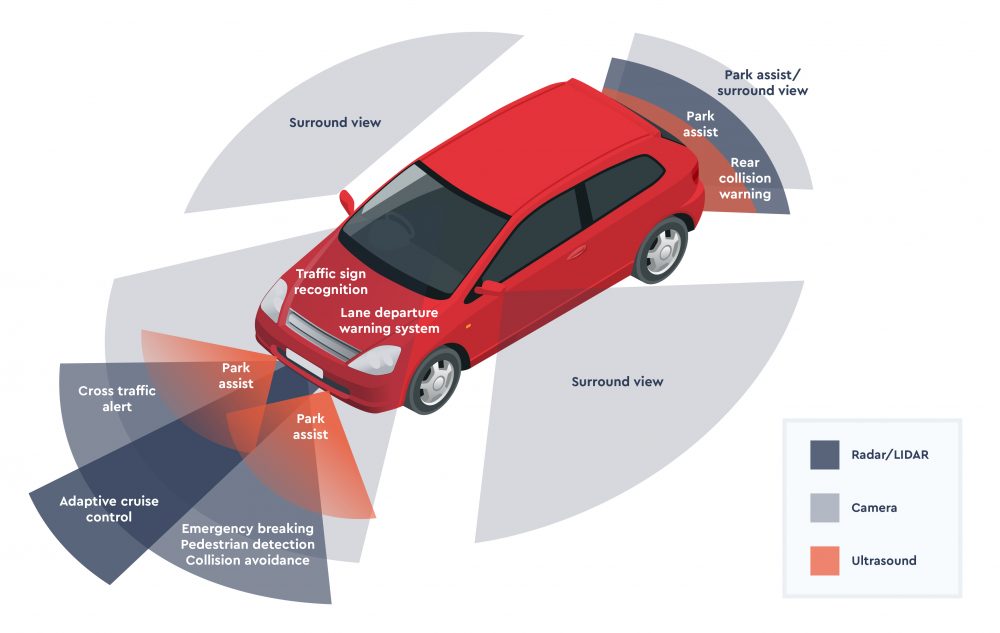Complete Guide to ADAS

Complete Guide to ADAS
The car industry is constantly changing and evolving, bringing smarter technologies to the consumer and improving vehicle safety, as well as comfort. It is in the interest of consumers, manufacturers and insurers to reduce the frequency of car accidents and the technologies that do so are highly sought after.
What is ADAS?
ADAS, which stands for Advanced Driver Assistance Systems, includes a variety of technologies, all of which help improve the driver’s awareness on the road and vehicle safety. ADAS comes in many forms, from alerting the driver of everything from traffic sign speeds to covering their blind spots. They can operate with a wide range of technology, such as radars or cameras to complete the job of lowering the risk of a collision as much as they can.
Why do we use ADAS?
The majority of road collisions are caused by human error, which are mistakes made directly by the driver which results in accidents. Advanced Driver Assistance Systems are developed to enhance vehicle safety by alerting the driver to a potential problem when it arises. ADAS are proven to minimise human error by alerting the driver to potential issues or taking over control of the vehicle. Some systems have even become mandatory in certain countries around the globe, proving how useful the system can be to drivers.
Where are ADAS cameras and sensors located?
ADAS cameras and/or sensors are located on the front, back and sides of the vehicle to capture images of the road, road signs, vehicles, and any other obstacles. Images are then captured and relayed back to the driver and ADAS system to trigger a safety response to the obstacle. The safety response can be a variety of actions, such as triggering an emergency brake or alerting the driver to an upcoming zebra crossing.
Common examples of ADAS
There are many examples of ADAS, all of which have saved human lives and prevented collisions by improving the awareness of the driver. Here we’ll take a look at the most universal and effective forms of ADAS and what they do to prevent human error traffic collisions.